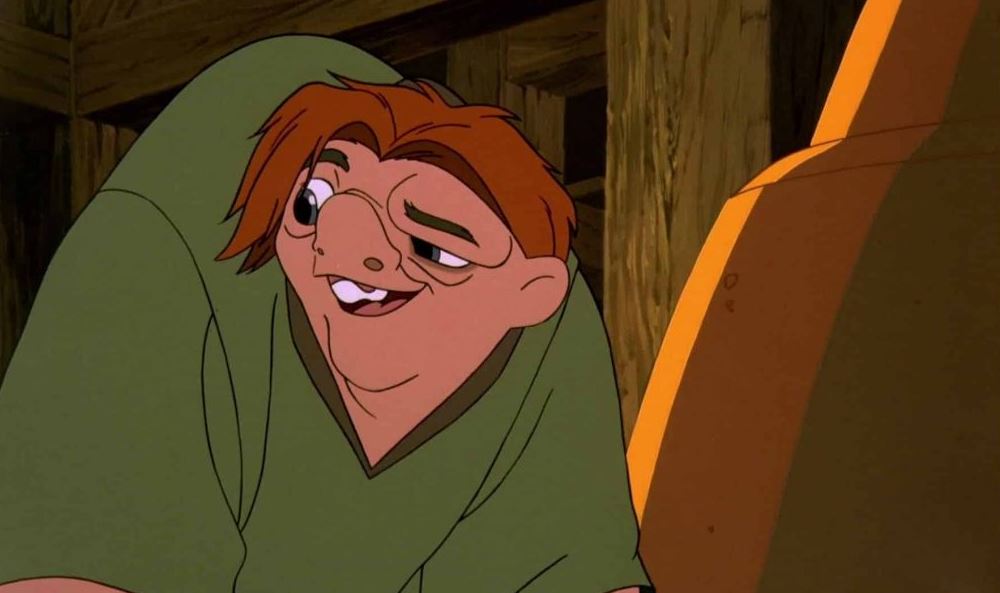Disney has been enchanting audiences with its captivating characters for decades, from beloved princesses to daring heroes. However, hidden within the depths of animation history, there lies a collection of less conventionally attractive characters that bring their own distinct charm to the table. In this blog post, we’ll take a delightful dive into the world of ugly Disney characters, exploring their roles, stories, and the reasons they’ve become endearing favorites for many. So, buckle up as we embark on this whimsical journey through Disney’s quirkier side.
The Quirky Charm of Ugly Disney Characters
Ugly Disney characters, while not conforming to traditional beauty standards, have carved their place in our hearts with their unique personalities, relatable struggles, and unexpected contributions to their respective stories. These characters showcase Disney’s commitment to diverse representation and remind us that appearances can be deceiving.
Unveiling the Unconventional: Ugly Disney Characters and Their Stories
1. Lovable Misfits:
In “Beauty and the Beast,” we meet Lumière, Cogsworth, and Mrs. Potts. These enchanted servants, transformed into household objects, are far from conventionally attractive, yet their loyalty and heartwarming personalities make them essential to the Beast’s journey to redemption.
2. The Unlikely Hero:
Hunchbacked and misunderstood, Quasimodo from “The Hunchback of Notre Dame” defies societal norms. His kindness, resilience, and love for the beautiful Esmeralda showcase that true beauty lies within.
3. The Hilarious Oddities:
In “The Lion King,” Timon and Pumbaa steal the show with their witty banter and carefree attitudes. These two unconventional sidekicks remind us that friendship transcends appearances.
4. Endearing Eccentricity:
Dumbo, the big-eared elephant, may be an unconventional protagonist, but his journey to self-discovery and acceptance is a timeless tale of triumph over adversity.

Exploring the Evolution of Ugly Characters in Disney
5. A Break from Convention:
Disney’s early characters adhered to traditional beauty standards. However, the studio’s willingness to challenge these norms has led to the creation of characters that are captivating in their uniqueness.
6. The Age of Relatability:
As Disney embraced more complex narratives, characters with flaws and imperfections became relatable mirrors of our own experiences.
7. The Power of Personality:
Ugly Disney characters often have larger-than-life personalities that overshadow their physical appearances, teaching us that confidence and authenticity are what truly shine.
Behind the Animation: Designing Ugly Disney Characters
8. Embracing Quirks:
Animators and designers work meticulously to infuse these characters with distinctive features that add depth and charm to their personas.
9. Balancing Aesthetics:
Crafting characters that are endearing while challenging traditional beauty standards requires a delicate balance that Disney’s creative teams masterfully achieve.
The Enduring Appeal: Why We Love Ugly Disney Characters
10. Relatability in Imperfection:
Ugly Disney characters resonate with audiences because they reflect our own struggles with self-acceptance and belonging.
11. Breaking Stereotypes:
These characters challenge stereotypes and encourage us to question preconceived notions about beauty and worth.
12. Unforgettable Personalities:
Their captivating personalities and quirks leave a lasting impression, making them unforgettable in a sea of conventional characters.
Spotlight on Some Favorites
13. Remy the Rat:
In “Ratatouille,” Remy proves that culinary prowess knows no boundaries, regardless of one’s appearance.
14. Mike Wazowski:
Mike from “Monsters, Inc.” teaches us that determination, humor, and friendship can overcome any perceived shortcomings.
15. Sebastian the Crab:
Despite his diminutive size, Sebastian in “The Little Mermaid” boasts a larger-than-life presence and a unique Jamaican accent that adds charm to his character.
Exploring the Impact: Lessons from Ugly Disney Characters
16. Embracing Uniqueness:
These characters teach us that embracing our quirks and differences is a path to self-discovery and empowerment.
17. Kindness Prevails:
Regardless of appearances, kindness and empathy are traits that stand the test of time and create lasting connections.
18. The Power of Laughter:
Ugly Disney characters often provide comic relief, reminding us that humor transcends looks.
Also Read: Most Ugly Disney Cartoon Characters
Answering Your Questions about Ugly Disney Characters
Can ugly Disney characters be protagonists?
Absolutely! Many Disney films place these characters at the forefront, highlighting their journeys and growth.
Do ugly Disney characters have unique storylines?
Yes, their stories often revolve around themes of self-discovery, acceptance, and the triumph of inner beauty.
Why are ugly Disney characters important?
They promote inclusivity and teach valuable lessons about self-worth, kindness, and breaking stereotypes.
Are ugly Disney characters only in older films?
No, Disney continues to create characters that challenge norms and celebrate diversity in both classic and modern films.
Do children resonate with ugly characters?
Absolutely, as children relate to their struggles and journeys, learning valuable life lessons along the way.
Can ugly characters become iconic?
Certainly, many of these characters have become beloved icons, showcasing the power of character depth over appearances.
Conclusion
Ugly Disney characters may not fit the traditional mold of beauty, but they have succeeded in capturing our hearts and imaginations with their relatable stories, unforgettable personalities, and enduring life lessons. From quirky sidekicks to unexpected heroes, these characters demonstrate that true beauty comes from within. So, the next time you watch a Disney movie, take a moment to appreciate the charm and depth of these remarkable characters who continue to teach us the importance of embracing our own uniqueness.